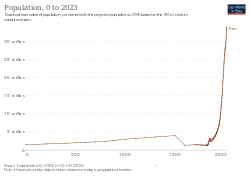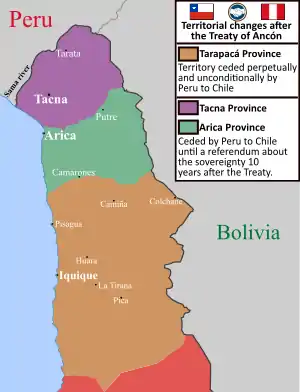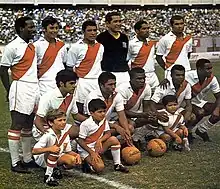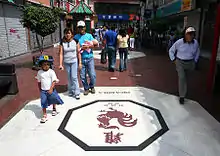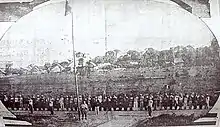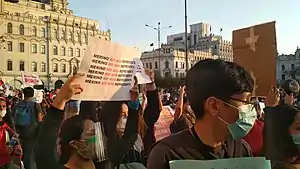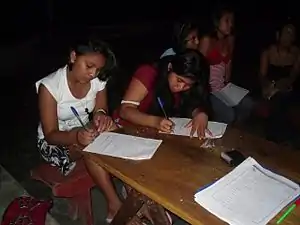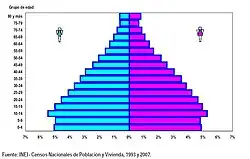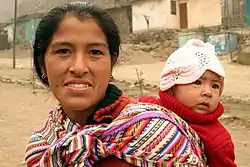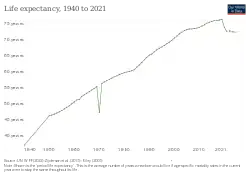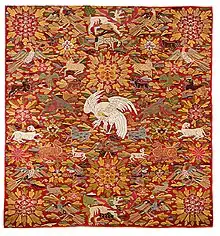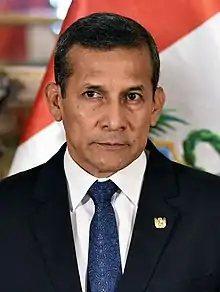Introduction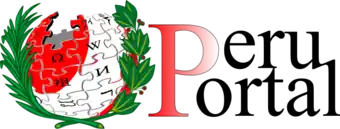 The Peru Portal
Peru (/pəˈruː/ ⓘ pə-ROO; Spanish: Perú [peˈɾu]; Quechua: Piruw [pɪɾʊw]; Aymara: Piruw [pɪɾʊw]), officially the Republic of Peru (ES-pe - República del Perú.ogg), is a country in western South America. It is bordered in the north by Ecuador and Colombia, in the east by Brazil, in the southeast by Bolivia, in the south by Chile, and in the south and west by the Pacific Ocean. Peru is a megadiverse country with habitats ranging from the arid plains of the Pacific coastal region in the west to the peaks of the Andes mountains extending from the north to the southeast of the country to the tropical Amazon basin rainforest in the east with the Amazon River. Peru has a population of over 32 million, and its capital and largest city is Lima. At 1,285,216 km2 (496,225 sq mi), Peru is the 19th largest country in the world, and the third largest in South America. Peruvian territory was home to several cultures during the ancient and medieval periods, and has one of the longest histories of civilization of any country, tracing its heritage back to the 10th millennium BCE. Notable pre-colonial cultures and civilizations include the Caral-Supe civilization (the earliest civilization in the Americas and considered one of the cradles of civilization), the Nazca culture, the Wari and Tiwanaku empires, the Kingdom of Cusco, and the Inca Empire, the largest known state in the pre-Columbian Americas. The Spanish Empire conquered the region in the 16th century and Charles V established a viceroyalty with the official name of the Kingdom of Peru that encompassed most of its South American territories, with its capital in Lima. Higher education started in the Americas with the official establishment of the National University of San Marcos in Lima in 1551. Peru has a population that includes Mestizos, Amerindians, Europeans, Africans and Asians. The main spoken language is Spanish, although a significant number of Peruvians speak Quechuan languages, Aymara, or other Indigenous languages. This mixture of cultural traditions has resulted in a wide diversity of expressions in fields such as art, cuisine, literature, and music. (Full article...)
| |||||||||||||||
| “ | You can't do a machine without knowing something about how it's going to work. As for the romantics, the costumes bored me and I don't enjoy doing period clothes. | ” |
Basic facts & figures
More did you know...
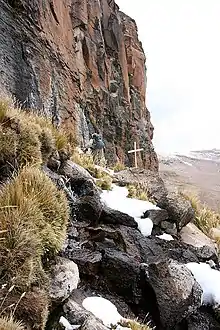
- ...that the most distant source of the Amazon River is the Nevado Mismi (pictured), a volcanic peak in the Peruvian Andes?
- ...that the Peruvian population has been formed by the combination of different ethnic groups over five centuries?
- ...that the Ecuadorian–Peruvian territorial dispute led to three wars and two peace treaties during the 20th century?
- ...that nine gold beads found in the Jiskairumoko archaeological site and dated to around 2,000 BC are the earliest known gold artifacts in the Americas?
- ...that according to the Truth and Reconciliation Commission some 70,000 persons died or disappeared during the internal conflict in Peru?
Peru Topics
Recognized content
| This is a list of recognized content, updated weekly by JL-Bot (talk · contribs) (typically on Saturdays). There is no need to edit the list yourself. If an article is missing from the list, make sure it is tagged (e.g. {{WikiProject Peru}}) or categorized correctly and wait for the next update. See WP:RECOG for configuration options. |
Featured articles
Featured lists
Good articles
- 2007 Carancas impact event
- Gómez de Alvarado
- Ampato
- Andagua volcanic field
- Juan Bielovucic
- Casiri (Tacna)
- Chachani
- Sarita Colonia
- Cutervo National Park
- Edwin Donayre
- Mariano Gagnon
- History of Lima
- Huascarán National Park
- LANSA Flight 502
- Battle of Ollantaytambo
- Peru at the 2010 Winter Olympics
- William H. Prescott
- Purupuruni
- Quyllurit'i
- Sabancaya
- Sara Sara
- Carlos Scharff
- Joran van der Sloot
- Squatting in Peru
- Lake Tauca
- Ticsani
- Yucamane
WikiProjects
Things you can do
 Assess and prioritise articles (log)
Assess and prioritise articles (log) Check for copyvios at Special:Contributions/Priscilla D, tag as {{Db-copyvio}} where appropriate
Check for copyvios at Special:Contributions/Priscilla D, tag as {{Db-copyvio}} where appropriate Create:
Create:- Expand: new articles; top importance articles
 FAC / FLC: Peru national football team
FAC / FLC: Peru national football team GAN:
GAN: Merge requests: Amazonas before the Inca Empire, Chachapoyas culture
Merge requests: Amazonas before the Inca Empire, Chachapoyas culture Review: Shining Path, Universitario de Deportes
Review: Shining Path, Universitario de Deportes Translate: National University of San Marcos
Translate: National University of San Marcos Work on Lima, the current article improvement drive
Work on Lima, the current article improvement drive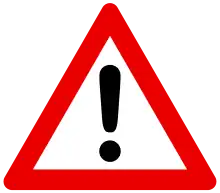 Wikify: articles needing attention
Wikify: articles needing attention
New articles
Rules | Match log | Results page (for watching) | Last updated: 2023-12-02 22:05 (UTC)
Note: The list display can now be customized by each user. See List display personalization for details.
- Peruvian Public Ministry controversy (edit | talk | history | links | watch | logs | tools) by WMrapids (talk · contribs · new pages (4)) started on 2023-12-02, score: 31
- Luis Guillermo Lumbreras (edit | talk | history | links | watch | logs | tools) by Cavarrone (talk · contribs · new pages (46)) started on 2023-11-30, score: 31
- Quapoya (edit | talk | history | links | watch | logs | tools) by Tom Radulovich (talk · contribs · new pages (93)) started on 2023-11-30, score: 16
- Havetiopsis (edit | talk | history | links | watch | logs | tools) by Tom Radulovich (talk · contribs · new pages (93)) started on 2023-11-30, score: 31
- Loxanthocereus faustianus (edit | talk | history | links | watch | logs | tools) by Cs california (talk · contribs · new pages (16)) started on 2023-11-29, score: 31
- Lourdes Huanca Atencio (edit | talk | history | links | watch | logs | tools) by Meliboxeo (talk · contribs · new pages (1)) started on 2023-11-28, score: 16
- ECMIA (edit | talk | history | links | watch | logs | tools) by Reyna2061 (talk · contribs · new pages (1)) started on 2023-11-22, score: 16
- Glances (edit | talk | history | links | watch | logs | tools) by Namesnik (talk · contribs · new pages (2)) started on 2023-11-27, score: 16
- Juan Rodríguez Ballesteros (edit | talk | history | links | watch | logs | tools) by Filiep (talk · contribs · new pages (30)) started on 2023-11-27, score: 16
- Gábor Kaleta (edit | talk | history | links | watch | logs | tools) by 180app (talk · contribs · new pages (74)) started on 2023-11-27, score: 31
- Vilmos Meruk (edit | talk | history | links | watch | logs | tools) by 180app (talk · contribs · new pages (74)) started on 2023-11-26, score: 31
- İlqar Muxtarov (edit | talk | history | links | watch | logs | tools) by 180app (talk · contribs · new pages (74)) started on 2023-11-26, score: 31
- Filipe Otheguy (edit | talk | history | links | watch | logs | tools) by Gantuze (talk · contribs · new pages (10)) started on 2023-11-26, score: 16
- Protogoniops (edit | talk | history | links | watch | logs | tools) by Simuliid (talk · contribs · new pages (277)) started on 2023-11-26, score: 23
- Cayara massacre (edit | talk | history | links | watch | logs | tools) by Prezbo (talk · contribs · new pages (15)) started on 2023-11-26, score: 23
- National Association of Relatives of the Kidnapped, Detained and Disappeared of Peru (edit | talk | history | links | watch | logs | tools) by Prezbo (talk · contribs · new pages (15)) started on 2023-11-26, score: 31
- Ccano massacre (edit | talk | history | links | watch | logs | tools) by Prezbo (talk · contribs · new pages (15)) started on 2023-11-25, score: 31
- Murder of Todd Smith (edit | talk | history | links | watch | logs | tools) by Prezbo (talk · contribs · new pages (15)) started on 2023-11-25, score: 31
- Weberbauerocereus churinensis (edit | talk | history | links | watch | logs | tools) by Cs california (talk · contribs · new pages (16)) started on 2023-11-25, score: 31
- Haydenoxylon (edit | talk | history | links | watch | logs | tools) by Tom Radulovich (talk · contribs · new pages (93)) started on 2023-11-25, score: 16
- Song Yang (diplomat) (edit | talk | history | links | watch | logs | tools) by 180app (talk · contribs · new pages (74)) started on 2023-11-24, score: 31
- Liang Yu (diplomat) (edit | talk | history | links | watch | logs | tools) by 180app (talk · contribs · new pages (74)) started on 2023-11-24, score: 23
- Jia Guide (edit | talk | history | links | watch | logs | tools) by 180app (talk · contribs · new pages (74)) started on 2023-11-24, score: 23
- Huang Minhui (diplomat) (edit | talk | history | links | watch | logs | tools) by 180app (talk · contribs · new pages (74)) started on 2023-11-24, score: 31
- Zhao Wuyi (edit | talk | history | links | watch | logs | tools) by 180app (talk · contribs · new pages (74)) started on 2023-11-24, score: 31
- Gao Zhengyue (edit | talk | history | links | watch | logs | tools) by 180app (talk · contribs · new pages (74)) started on 2023-11-24, score: 31
- Yin Hengmin (edit | talk | history | links | watch | logs | tools) by 180app (talk · contribs · new pages (74)) started on 2023-11-24, score: 23
- 2024 in Peru (edit | talk | history | links | watch | logs | tools) by Rickyurs (talk · contribs · new pages (93)) started on 2023-11-24, score: 31
- Mai Guoyan (edit | talk | history | links | watch | logs | tools) by 180app (talk · contribs · new pages (74)) started on 2023-11-24, score: 23
- Ren Jingyu (edit | talk | history | links | watch | logs | tools) by 180app (talk · contribs · new pages (74)) started on 2023-11-24, score: 23
- Chen Jiuchang (edit | talk | history | links | watch | logs | tools) by 180app (talk · contribs · new pages (74)) started on 2023-11-24, score: 23
- Dai Shiqi (edit | talk | history | links | watch | logs | tools) by 180app (talk · contribs · new pages (74)) started on 2023-11-24, score: 23
- Yang Mai (edit | talk | history | links | watch | logs | tools) by 180app (talk · contribs · new pages (74)) started on 2023-11-24, score: 31
- Carolina Díaz Pimentel (edit | talk | history | links | watch | logs | tools) by Thilsebatti (talk · contribs · new pages (28)) started on 2023-11-24, score: 46
- Xu Huang (diplomat) (edit | talk | history | links | watch | logs | tools) by 180app (talk · contribs · new pages (74)) started on 2023-11-24, score: 31
- Wang Ze (diplomat) (edit | talk | history | links | watch | logs | tools) by 180app (talk · contribs · new pages (74)) started on 2023-11-23, score: 23
- Wang Yanchang (edit | talk | history | links | watch | logs | tools) by 180app (talk · contribs · new pages (74)) started on 2023-11-23, score: 31
- Hsu Shu-hsi (edit | talk | history | links | watch | logs | tools) by 180app (talk · contribs · new pages (74)) started on 2023-11-23, score: 31
- Pao Chun-chien (edit | talk | history | links | watch | logs | tools) by 180app (talk · contribs · new pages (74)) started on 2023-11-23, score: 23
- Li Jun (diplomat) (edit | talk | history | links | watch | logs | tools) by 180app (talk · contribs · new pages (74)) started on 2023-11-22, score: 23
- Wang Teh-fen (edit | talk | history | links | watch | logs | tools) by 180app (talk · contribs · new pages (74)) started on 2023-11-22, score: 31
- The General History of Peru (edit | talk | history | links | watch | logs | tools) by HirondellesXVIIIe (talk · contribs · new pages (4)) started on 2023-11-22, score: 31
- Iuming C. Suez (edit | talk | history | links | watch | logs | tools) by 180app (talk · contribs · new pages (74)) started on 2023-11-22, score: 23
- Lo Tsung-yee (edit | talk | history | links | watch | logs | tools) by 180app (talk · contribs · new pages (74)) started on 2023-11-22, score: 23
- Hsia Yi-Ting (edit | talk | history | links | watch | logs | tools) by 180app (talk · contribs · new pages (74)) started on 2023-11-22, score: 23
- Wu Chin-lin (edit | talk | history | links | watch | logs | tools) by 180app (talk · contribs · new pages (74)) started on 2023-11-22, score: 31
- Begonias Tower (edit | talk | history | links | watch | logs | tools) by 180app (talk · contribs · new pages (74)) started on 2023-11-21, score: 31
- The Westin Lima Hotel & Convention Center (edit | talk | history | links | watch | logs | tools) by 180app (talk · contribs · new pages (74)) started on 2023-11-21, score: 31
- Edificio BBVA (edit | talk | history | links | watch | logs | tools) by 180app (talk · contribs · new pages (74)) started on 2023-11-21, score: 16
- Alberto Tauro del Pino (edit | talk | history | links | watch | logs | tools) by 180app (talk · contribs · new pages (74)) started on 2023-11-21, score: 31
- Liu Shih-hsun (edit | talk | history | links | watch | logs | tools) by 180app (talk · contribs · new pages (74)) started on 2023-11-21, score: 31
- Alicia Cervera (edit | talk | history | links | watch | logs | tools) by Raydann (talk · contribs · new pages (56)) started on 2023-11-21, score: 16
- APEC Peru 2024 (edit | talk | history | links | watch | logs | tools) by Lmpesantezt (talk · contribs · new pages (3)) started on 2023-11-18, score: 16
- ADC Juan Pablo II College (edit | talk | history | links | watch | logs | tools) by Ericbaudouin (talk · contribs · new pages (2)) started on 2023-11-21, score: 31
- Zhang Yintang (edit | talk | history | links | watch | logs | tools) by 180app (talk · contribs · new pages (74)) started on 2023-11-21, score: 31
- Cheng Tsao-Ju (edit | talk | history | links | watch | logs | tools) by 180app (talk · contribs · new pages (74)) started on 2023-11-21, score: 23
- Andrés Barbé González (edit | talk | history | links | watch | logs | tools) by 180app (talk · contribs · new pages (74)) started on 2023-11-21, score: 31
- Roberto Ibarra (edit | talk | history | links | watch | logs | tools) by 180app (talk · contribs · new pages (74)) started on 2023-11-21, score: 31
- Juan Lira Bianchi (edit | talk | history | links | watch | logs | tools) by 180app (talk · contribs · new pages (74)) started on 2023-11-20, score: 31
- Carlos Martínez Sotomayor (edit | talk | history | links | watch | logs | tools) by 180app (talk · contribs · new pages (74)) started on 2023-11-20, score: 31
- José Miguel Barros (edit | talk | history | links | watch | logs | tools) by 180app (talk · contribs · new pages (74)) started on 2023-11-20, score: 31
- Sergio Larraín García-Moreno (edit | talk | history | links | watch | logs | tools) by 180app (talk · contribs · new pages (74)) started on 2023-11-20, score: 23
- Horacio Walker (edit | talk | history | links | watch | logs | tools) by 180app (talk · contribs · new pages (74)) started on 2023-11-20, score: 31
- Manuel Rivas Vicuña (edit | talk | history | links | watch | logs | tools) by 180app (talk · contribs · new pages (74)) started on 2023-11-20, score: 31
- Conrado Ríos (edit | talk | history | links | watch | logs | tools) by 180app (talk · contribs · new pages (74)) started on 2023-11-20, score: 31
- FC San Marcos de Huari (edit | talk | history | links | watch | logs | tools) by Ericbaudouin (talk · contribs · new pages (2)) started on 2023-11-19, score: 31
- Hugo Ancajima (edit | talk | history | links | watch | logs | tools) by Ragd5 (talk · contribs · new pages (2)) started on 2023-11-18, score: 23
- APEC Perú 2024 (edit | talk | history | links | watch | logs | tools) by Lmpesantezt (talk · contribs · new pages (3)) started on 2023-11-18, score: 16
- Vicente Santa Cruz Vargas (edit | talk | history | links | watch | logs | tools) by 180app (talk · contribs · new pages (74)) started on 2023-11-18, score: 23
- Jovino Novoa Vidal (edit | talk | history | links | watch | logs | tools) by 180app (talk · contribs · new pages (74)) started on 2023-11-18, score: 31
Associated Wikimedia
The following Wikimedia Foundation sister projects provide more on this subject:
-
 Commons
Commons
Free media repository -
 Wikibooks
Wikibooks
Free textbooks and manuals -
 Wikidata
Wikidata
Free knowledge base -
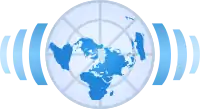 Wikinews
Wikinews
Free-content news -
 Wikiquote
Wikiquote
Collection of quotations -
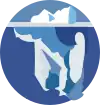 Wikisource
Wikisource
Free-content library -
 Wikiversity
Wikiversity
Free learning tools -
 Wikivoyage
Wikivoyage
Free travel guide -
 Wiktionary
Wiktionary
Dictionary and thesaurus
-
 List of all portalsList of all portals
List of all portalsList of all portals -
 The arts portal
The arts portal -
 Biography portal
Biography portal -
 Current events portal
Current events portal -
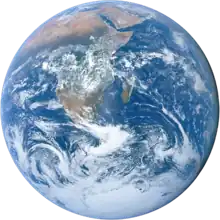 Geography portal
Geography portal -
 History portal
History portal -
 Mathematics portal
Mathematics portal -
 Science portal
Science portal -
 Society portal
Society portal -
 Technology portal
Technology portal -
 Random portalRandom portal
Random portalRandom portal -
 WikiProject PortalsWikiProject Portals
WikiProject PortalsWikiProject Portals
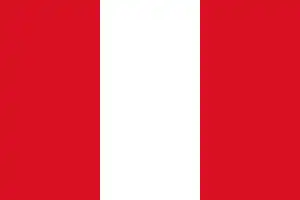
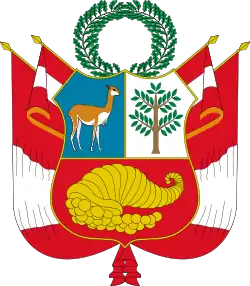

.jpeg.webp)
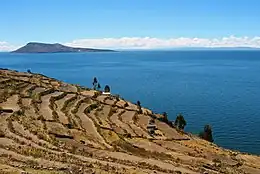

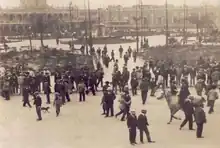

.svg.png.webp)
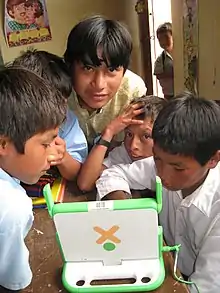
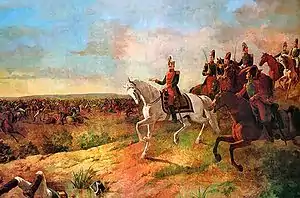
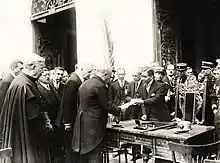
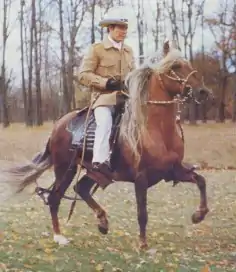
_LOC_2010592749.jpg.webp)
.svg.png.webp)
